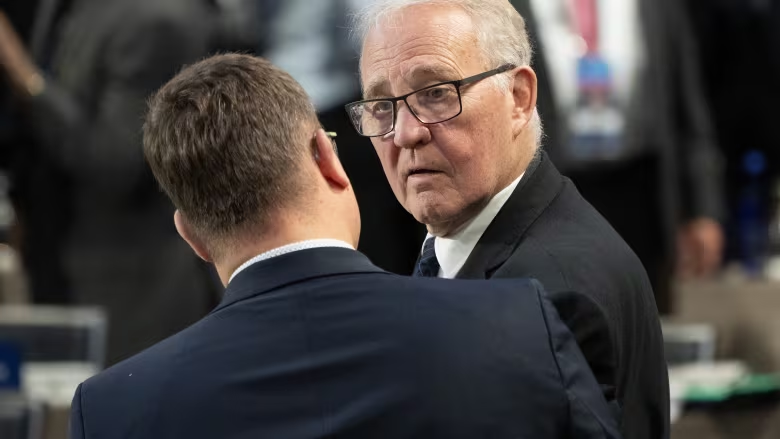Blair Defends Canada’s Defense Spending Pace Amid NATO Criticism
Washington (CBC News) – Defence Minister Bill Blair defended Canada’s deliberate approach to meeting NATO’s defense spending target, citing the complexity and scale of the investments required. This defense came following a week of intense scrutiny and criticism at the NATO summit in Washington, where Canada’s commitment to reaching the alliance’s benchmark of allocating two percent of GDP to defense spending was called into question.
Blair emphasized that meeting NATO’s defense spending target isn’t simply about making purchases at military trade shows. “It’s not about showing up with a credit card and buying a whole bunch of stuff,” Blair said in an interview with CBC News. He highlighted the need for a thoughtful and credible path to the two percent goal, rather than making empty promises or setting unrealistic deadlines.
The Liberal government faced significant pressure from U.S. lawmakers and business representatives, particularly congressional Republicans, who criticized Canada’s defense spending plans. Despite this, Prime Minister Justin Trudeau reaffirmed Canada’s commitment to achieving the two percent benchmark by 2032, questioning whether the focus on this figure truly reflects members’ contributions to NATO.
“We continually step up and punch above our weight,” Trudeau stated. “This isn’t always reflected in the crass mathematical calculation that certain people turn to very quickly, which is why we’ve always questioned the two percent as the be-all, end-all of evaluating contributions to NATO.”
Blair acknowledged the challenge but stressed the importance of providing a realistic timeframe. “It would have been easier for us to just simply put a marker down, put a date down,” Blair admitted. “But I wanted to be able to come to our allies with a credible and verifiable path to two percent for Canada.”
The path outlined by the Liberal government includes acquiring new capabilities such as submarines, an integrated air and missile defense system for North America, ground-based air defenses, long-range missiles, modern artillery, and new tanks. Blair suggested that focusing on off-the-shelf equipment, like the recently purchased Boeing P-8 surveillance planes, could expedite the procurement process, which has historically been slow and fraught with delays.
The commitment to these substantial investments reflects Canada’s broader strategic goals and the unique challenges it faces compared to smaller NATO allies. “For Canada, it’s a far more substantial investment,” Blair said. “And from Canada, that investment actually requires the acquisition of capabilities that most of those other, smaller NATO members do not require.”
Despite these efforts, much of what the Liberal government aims to achieve cannot be realized within its current mandate. Conservative Leader Pierre Poilievre, responding to the government’s commitment, refused to promise meeting the NATO two percent goal, citing Canada’s financial constraints. “I’m inheriting a dumpster fire when it comes to the budget,” Poilievre said. He emphasized a focus on value and efficiency in military spending, as well as a shift from a “woke culture” to a “warrior culture” to boost recruitment.
The Conservative leader contrasted the current situation with his party’s previous tenure, asserting that they faced less criticism because they were “delivering more,” despite cutting the Department of National Defence budget by $2.7 billion annually between 2012 and 2015 to balance the budget.
As Canada navigates these complex issues, Blair remains focused on ensuring that the country’s defense strategy is both practical and sustainable, aiming to reassure NATO allies of Canada’s commitment to the alliance’s goals while addressing domestic fiscal realities.

